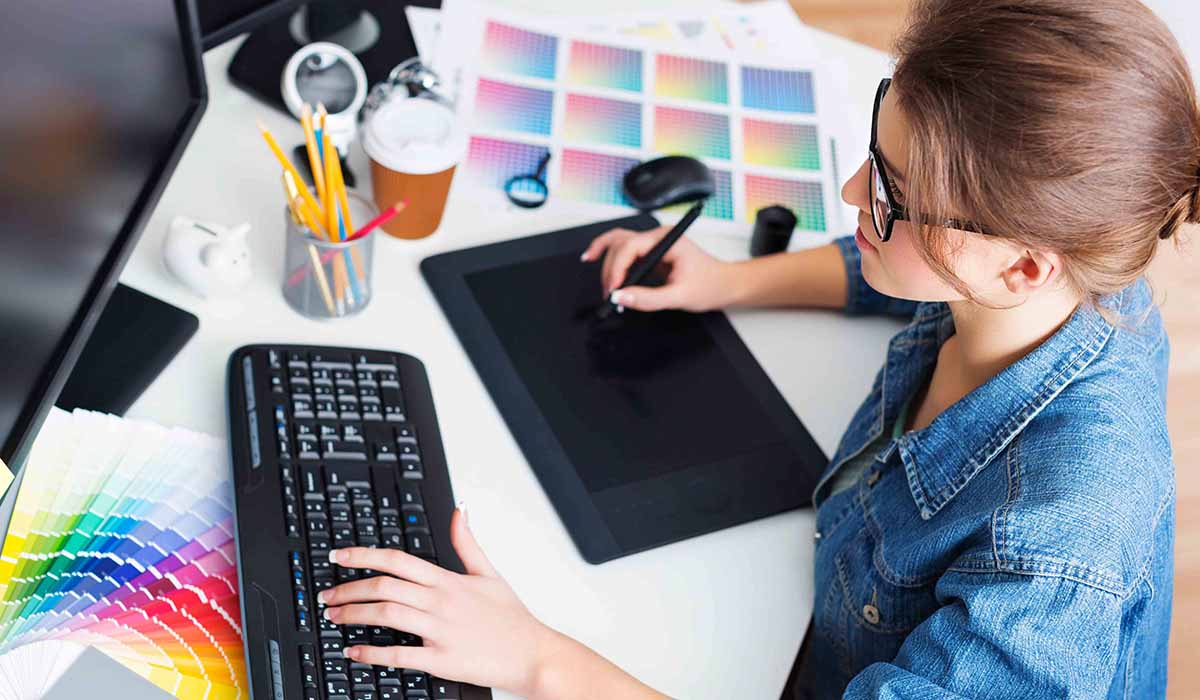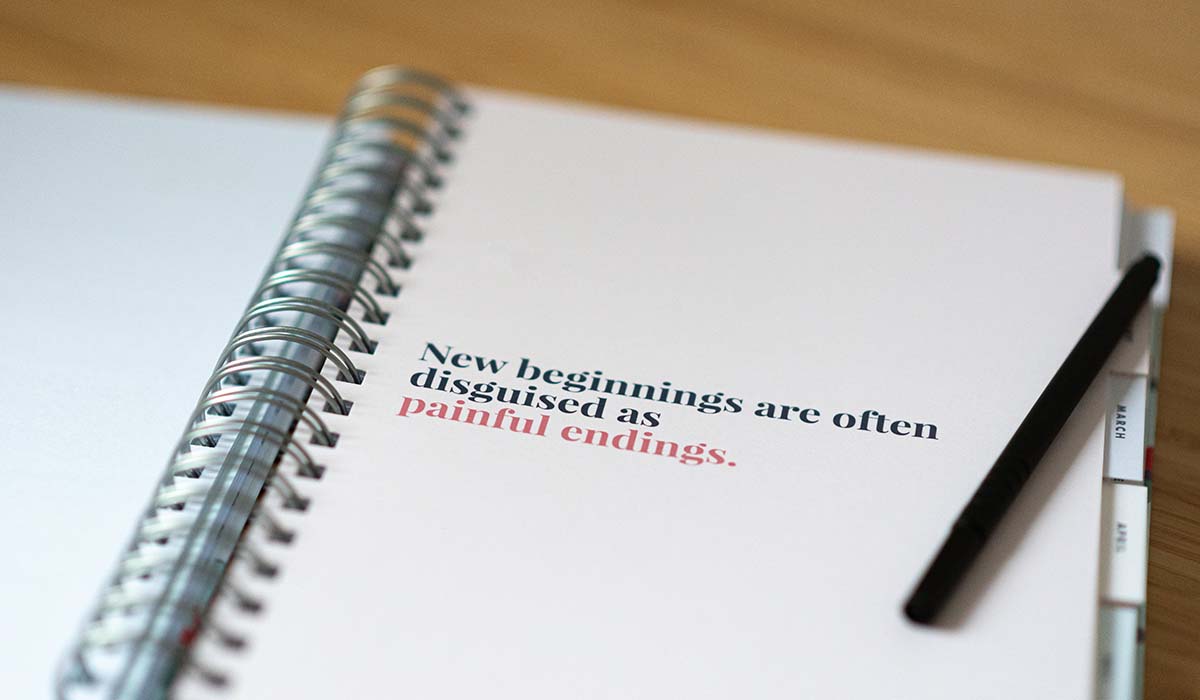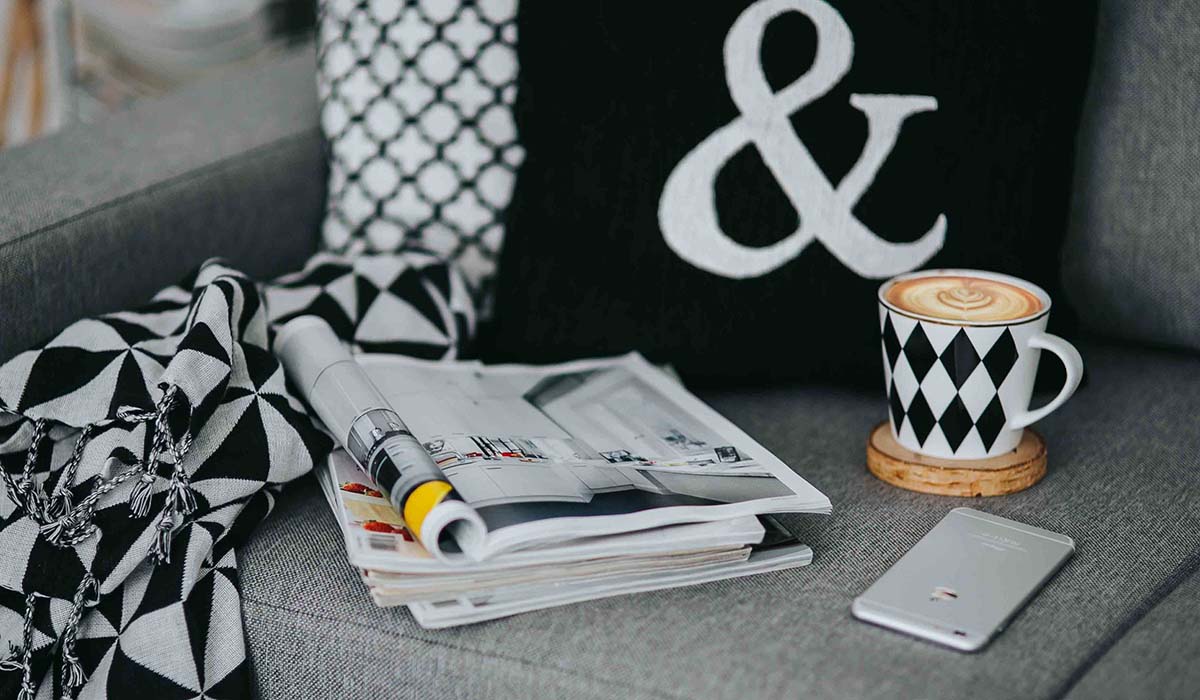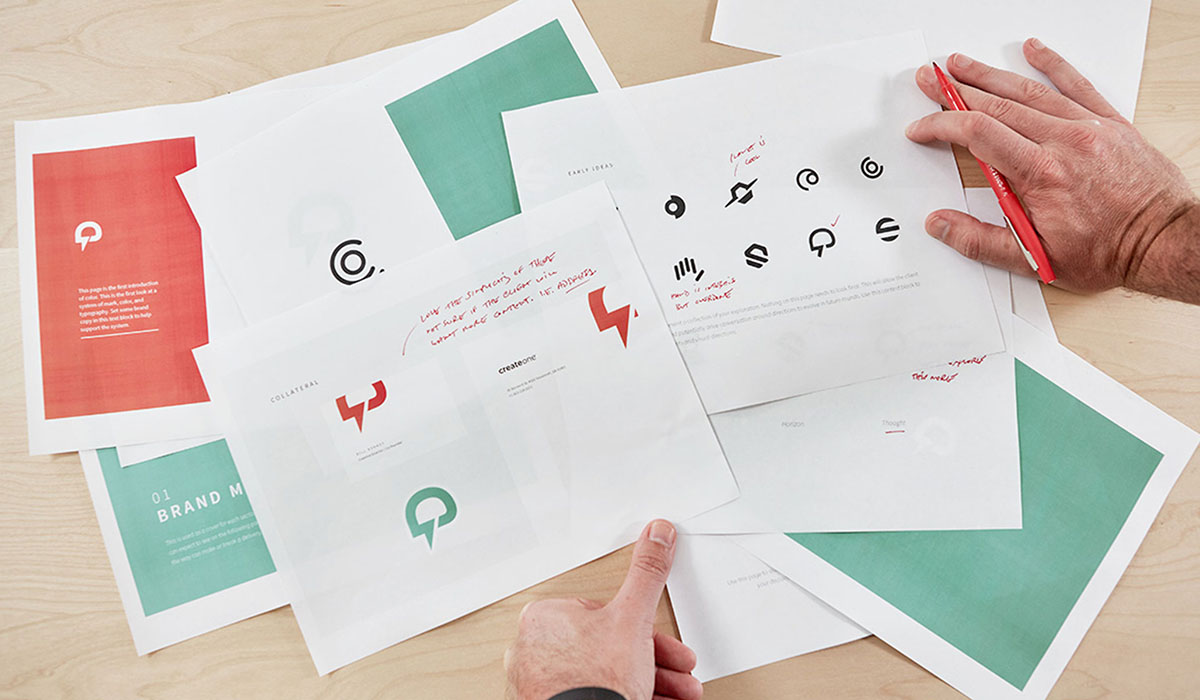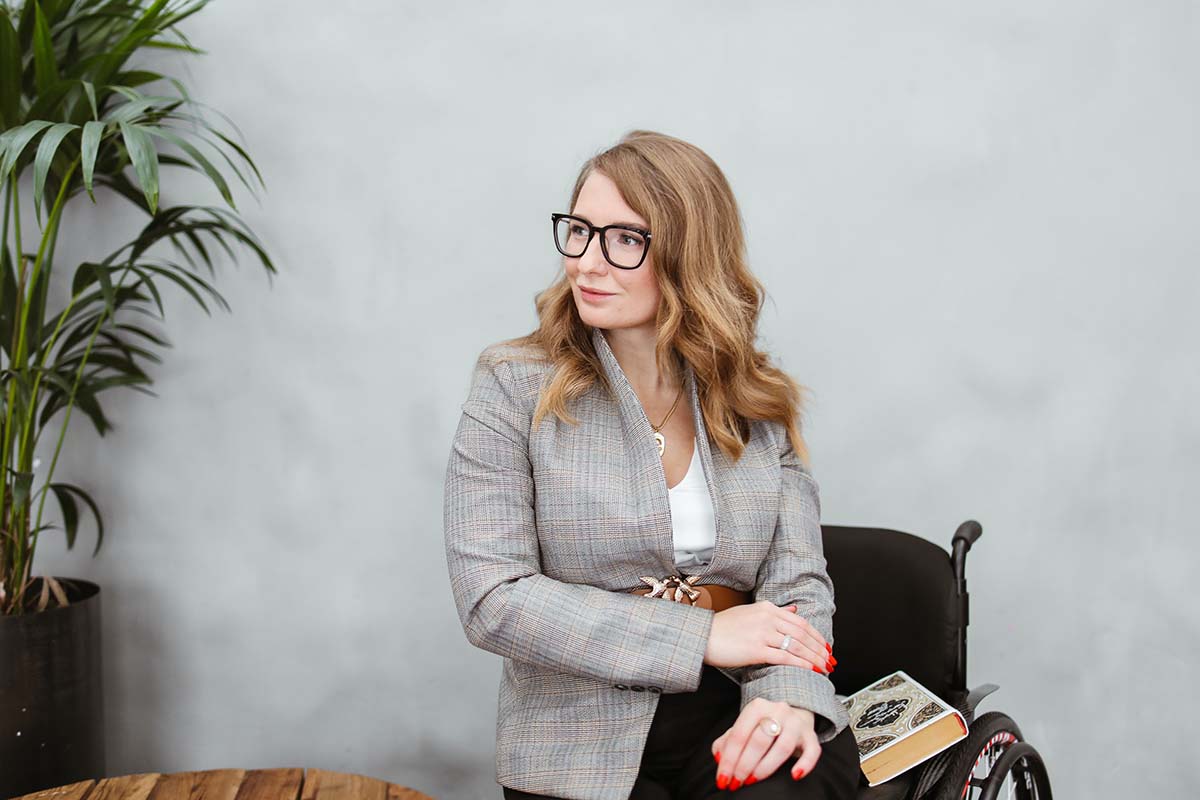Why Good Design Isn’t Optional Anymore
Key Points
-
Stay Involved, But Trust Your Designer: Designers handle the technical details of print and web production, but your involvement—especially for final approvals—is still important.
-
Avoid Last-Minute Changes: Once you’ve signed off, changes can be costly and time-consuming. Be sure everything is finalized before moving into production.
-
Communicate Early with Vendors: If you’ve chosen the printer or web developer, connect them with your designer early to avoid miscommunication and ensure a smooth handoff.
Let’s be real — your visuals matter. They’re often the first thing someone sees before they even read a single word about your business.
And in today’s fast-scrolling world, you don’t get a second chance to make a solid first impression.
That’s where a professional graphic designer steps in.
Behind every standout brand is thoughtful, strategic design. It’s what gives your business a face, a tone, and trust.
A seasoned designer, especially one from a reputable graphic design company, knows how to translate your brand message into visuals that connect, convert, and make people feel something.
The Risk of Settling for “Good Enough”
We get it — hiring a junior or less experienced designer can seem like a smart way to save money. But here’s the truth: design mistakes cost more in the long run.
Missed deadlines, inconsistent branding, print errors, and visuals that simply don’t land — all of it can hold your business back.
And what’s even scarier? The opportunities you’ll never know you missed. A partnership that passed you by. A customer who clicked away.
A project that didn’t get the attention it deserved — all because your brand didn’t speak loud or clearly enough.
That’s why working with a trusted graphic design service matters.
They don’t just make things look good. They understand what makes a brand unforgettable, and they bring that to life through design that’s intentional, powerful, and smart.
What You Really Need from a Designer
You don’t just need someone who knows how to use design tools. You need someone who:
- Understands your goals and business personality;
- Can offer fresh ideas, not just take orders;
- Will challenge you to think bigger and bolder.
Hiring a designer means letting go a little — trusting their process and expertise.
If you’re not ready to release some control, you’ll likely slow things down or miss the full potential of what a strong design could do for you.
Design isn’t just about looking good — it’s about positioning your business to grow, compete, and connect.
And in a world where attention is currency, a great designer could be the best investment you make this yea
Qualify the designer
Having a computer with graphics software does not make someone a designer, just like having a toolbox does not make someone a mechanic.
There are many kinds of designers specializing in different areas.
Companies with multiple design needs (print, web, corporate identity) should not hire three different designers to complete their communications system.
When not managed correctly, this almost always results in an inconsistent application and interpretation of a brand, leaving prospective customers confused.
If your company needs a range of materials and you don’t have someone dedicated to championing and managing your brand, you should look at design shops that can handle all your needs.
Some freelance designers will also have all the skills and experience necessary to complete such a package of services; make sure their logo portfolio reflects this.
Let’s take a look at some specific projects you may hire designer help for corporate identity
A designer who is good with web or print design will not necessarily create a credible, compelling, and memorable logo mark for your company.
Remember, this is the foundation for your communication and promotional efforts.
It has to be versatile and robust enough to support all other elements of your communications package and stand on its own.
Look through a prospective designer’s portfolio for logo work, and ask him to elaborate on what part of the process he was responsible for.
Junior designers’ portfolios are often padded with the work they may have had only a small role in.
Web design: Some people think graphic designers make websites, while others think this is done by more technical types (developers or coders).
In most cases, working with a designer, you will need both a creative and technical type to develop a successful and productive website.
The creative side extends the user interface, helps organizes content, and understands usability issues and behavior.
The technical aspect involves taking all the content and creative input from the designer and making it all work across multiple browsers and platforms while possibly setting up a database to serve up the website content.
Occasionally one person can do both. More likely, if you hire a creative, they already work with a firm that can build back-end databases or code in PHP.
Unless the creative person you are considering has direct experience or resources for development on the back end of things, you may want to continue looking.
Occasionally one person can do both. More likely, if you hire a creative, they already work with a firm that can build back-end databases or code in PHP.
Unless the creative person you are considering has direct experience or resources for development on the back end of things, you may want to continue looking.
Print Materials Design
This area is probably one of the easiest to find creative help.
Business cards, brochures, sales sheets, and mailers are standard fare for most designers.
When reviewing portfolios, look for a solid aesthetic and clear, targeted communication of brand messages.
Pay attention to originality and strategic thinking. If all of a designer’s samples look too similar, yours probably will too.
Every company or product has its own personality, so your materials should reflect that with a distinct and consistent visual language that supports your brand identity.
One thing that separates a professional designer from a novice is their understanding of the printing process.
This becomes especially important if you’re working with spot colors, or using custom techniques like embossing, die-cutting, or metallic inks.
Printing has its own learning curve, and a designer who understands both the creative and technical sides can help you avoid costly mistakes and make the most of every piece you produce.
Where to Start Looking
One of the best ways to find a talented and professional designer is to start with people you already know.
Ask your friends, colleagues, or business contacts if they’ve worked with a designer they’d recommend. Personal referrals often lead to the most reliable results.
If that doesn’t turn up anything, head online—there are plenty of great resources.
For projects that require in-person meetings or local collaboration, check out your local chapters of these organizations:
- AIGA – American Institute of Graphic Arts
- Graphic Artists Guild
- Society of Graphic Designers of Canada
If you’re open to working remotely, try browsing these online directories:
Making the Right Choice
By this point, you have some names and contacts for designers, have seen their work and had some preliminary conversations about the project.
It would help if you had a good sense of compatibility and their level of interest in your project.
If you are on the fence about who to hire, submit an RFP (request for proposal) outlining your goals and expectations, deadlines, and deliverables.
You can determine many things from the responses to your RFP and narrow down your selection quickly.
You will also get a sense of how professional a designer/firm is (Did they answer all your questions and run a spell check before submitting their proposal?).
Your Budget
This is often one of the key decision-making factors when choosing a designer.
You will likely see a range of prices and processes in the proposals you receive, but don’t make the mistake of blindly jumping for the lowest bid.
When hiring a designer, the old cliche “you get what you pay for” often holds.
Remember, when considering your budget, hiring a designer is an investment, not an expense.
✅Then, Ask Yourself These Questions
-
Does the designer’s portfolio reflect their pricing?
Even if you don’t consider yourself especially creative, you can usually feel the quality of a designer’s work. That’s the power of good design—it resonates on a gut level. If you’re not impressed or inspired by what you see, it’s a sign to keep looking. -
Who are you really competing with?
This question matters more than you might think. If your business is staying local with no plans to expand, a less experienced freelance designer might be a great fit—and more budget-friendly.But if you aim to compete on a larger scale—even just regionally—you’ll likely need a designer with deeper experience and stronger creative skills, even if it costs a bit more.
Remember: creativity isn’t just a nice-to-have. It can be a real competitive edge that elevates your brand above the noise.
The Contract: Laying the Groundwork for a Smooth Project
A strong contract sets expectations clearly from the start.
It should outline what you, the client, will provide (such as copy, photographs, or other assets), what the designer will deliver (like a logo, website, or print materials), and who is responsible for each part of the process.
Typically, a designer creates a proposal after an initial conversation or in response to an RFP (Request for Proposal).
Once agreed upon, the proposal becomes the foundation of your contract. Here’s a quick overview of what should be included:
-
Project Description: A brief summary of the goals and objectives. What are you trying to achieve?
-
Deliverables: A clear, detailed list of what the designer will provide. Include specifications such as size, format, color, and quantity.
-
Fees and Expenses: While some expenses (like printing) may be estimated, they should be included if known. Understand what’s included in the total fee and what could be billed separately.
-
Timeline & Process: This should outline key dates—content delivery deadlines, concept presentations, review periods, and final delivery. It should also define how many rounds of revisions are included in the fee.
-
Terms & Conditions: Look for details on cancellation policies, intellectual property rights, payment terms, and what happens if the project expands beyond its original scope.
For larger or long-term projects, designers may break work into phases based on delivery milestones.
Keep in mind, though, that creative work must follow a logical sequence.
For example, don’t ask a designer to redo your logo after they’ve already designed your trade show brochure—it’s like putting the cart before the horse.
Be patient and let the process unfold in the right order.
Lastly, be prepared to cover some costs upfront.
Designers shouldn’t be expected to front expenses like printing or subcontractor fees before being paid.
A fair contract protects both parties—and sets your project up for success.
Working with a Designer: A Quick Look at the Process from Start to Finish
A professional designer typically follows a well-defined process when working with clients.
This section gives you a general overview of what to expect—from signing the contract to receiving the final deliverables.
One of the most important (and often overlooked) stages, especially by less experienced designers, is the research and planning phase.
This early stage lays the foundation for the entire project. Skip it, and you risk ending up with results that don’t truly align with your company’s goals.
Think of it like gardening: if you don’t prepare the soil properly, all the effort you put into planting, watering, and maintaining can still lead to a poor harvest.
With that in mind, here are the three key stages you’ll typically go through when working with a designer:
Research and Planning: Work the Soil Before You Plant
The contract is signed, and you’re excited to see the first glimpse of your new brand—but don’t skip ahead just yet.
This early stage is critical for shaping your expectations and laying a strong foundation for the entire project.
If you don’t give your designer clear, written objectives and goals for your brand update, don’t be surprised if their “shot in the dark” misses the mark.
A seasoned designer or agency will likely send you a client survey or set up interviews with you and other key decision-makers.
Expect thoughtful, strategic questions like:
- “What’s the primary message you want to communicate?”
- “Who is your target audience?”
- “What sets your company apart from competitors?”
These aren’t just formalities—both you and your designer need well-defined answers before any creative work begins.
Be ready to spend time thinking through these questions.
Many companies discover during this stage that different team members have very different ideas about the brand’s identity, audience, or purpose.
Aligning everyone on a shared vision may take time, but it’s absolutely essential to the success of your design project—and your brand overall.
Also, this is the right time to set or clarify project deadlines (if that wasn’t done in the initial proposal).
Finally, a good designer will also invest time in researching your company, your competitors, and your industry.
This context helps them create work that’s not just beautiful—but strategic and effective
Now the fun begins. The research and planning stage gave your designer clear direction—and now it’s time to bring ideas to life.
Brainstorming & Concept Development
At this stage, your designer dives into creative exploration.
They might be sketching concepts, collecting inspiration, flipping through Pantone books, or building rough ideas on the computer. It’s a highly creative and instinctive part of the process.
Most clients aren’t directly involved here—and that’s a good thing. This phase thrives when there’s freedom to explore. Limiting ideas too early can stifle great outcomes. If you have specific ideas or inspirations you’d like considered, make sure to share them before this stage begins.
✅Refinement
Once the strongest concepts emerge, the designer refines them—aligning the work more closely with your objectives, audience, and brand.
✅Presentation
Now you get your first look. This is where you begin to shape the creative direction together.
Designers present work in different ways depending on your style and the project needs. Conceptual clients might see sketches, mood boards, or rough drafts. Others may see more polished visuals—layouts with color, typography, and imagery.
For logo work, many designers begin in black and white to focus on form before adding color. Your logo should be effective in monochrome—it ensures clarity and versatility.
In the case of websites, your designer might also demonstrate how interactive elements (like hover states or animations) will function.
✅Edits & Reviews
Your contract should outline how many rounds of edits are included—three is often the standard. More than that can be a red flag that key decisions weren’t made early on or that communication has broken down.
It’s also important to know when to let go. Too many tweaks can dilute a strong concept. I’ve seen clients say, “This was looking great—what happened?” after over-editing a once-solid design. It’s a classic case of too much meddling.
✅ Content & Feedback Tips
If you’re supplying content, be sure it’s fully edited and finalized before handing it off. It’s frustrating—and costly—to catch typos during printing or coding.
Also, gather and consolidate all feedback into a single, clear document. When multiple people send conflicting edits, it only confuses the designer and slows progress.
Production: From Final Sign-Off to the Finish Line
So, you’ve officially signed off on the final version.
Proofreading is complete, paper stocks and folding dummies are confirmed, and everything’s in place. You’re almost there.
Most designers will—and should—manage the print production or website development process.
They’re trained to catch the fine details, whether during press checks or web testing, that you might not notice. But it’s still important for you to stay involved and informed.
Just keep in mind: making changes at this stage can lead to costly delays and extra work. Be confident in your decisions before moving forward.
Print Production
Preparing files for print is a world of its own, but an experienced designer will know exactly how to set things up to avoid issues once files are sent to the printer or vendor.
If you’ve chosen the printer yourself, make sure your designer connects with them well in advance of the file delivery date. They’ll need to align on technical requirements and file specifications.
You might also want to be part of reviewing printer proofs—this is your final opportunity to check for color accuracy, layout (imposition), and content before anything goes to press.
Press checks often reveal last-minute tweaks that can make a big difference.
Press operators can adjust colors slightly or clean up imperfections like “hickeys” (small blemishes from dust or debris on the press).
While your designer should attend the press check and knows exactly what to look for, your presence isn’t required—but staying available for quick approvals can help keep things moving smoothly.
Web Production: Bringing Your Brand to Life
Seeing your website take shape is exciting—this is when your brand starts working for you.
But the real key? Making sure it works for everyone else, too.
Understand your audience and how they’ll likely access your site. Are they using mobile devices?
Older browsers? Slower internet connections?
If your designer isn’t tech-savvy or doesn’t consider these factors, your site may look great in one environment and break in another.
Every browser and platform can display web pages differently. Make sure your designer tests the site across various devices and browsers to ensure a consistent, polished experience for all users.
Web users are notoriously impatient—you have just a few seconds to grab their attention.
If your site loads slowly, doesn’t display properly, or only works in one browser (like Internet Explorer for PC), you risk losing entire segments of your audience.
If you’re responsible for providing content, be sure it’s final before handing it off to the designer.
This helps avoid delays and saves time on unnecessary revisions.
To those new to the process, all of this might feel overwhelming. The truth? We’ve only scratched the surface.
But here’s the good news: a great designer will guide you every step of the way, making the process smoother—and even enjoyable.
Most importantly, a professional designer helps your company grow by creating brand assets that support and strengthen your marketing efforts.
✅If there’s one takeaway, let it be this: invest the time and money to build your brand right.
Cutting corners now will cost you more later.
Be clear about your goals and expectations, and trust your designer’s expertise in visually communicating your brand’s message.
By now, you’ve hopefully qualified yourself—and a shortlist of designers—to take on your creative projects.

